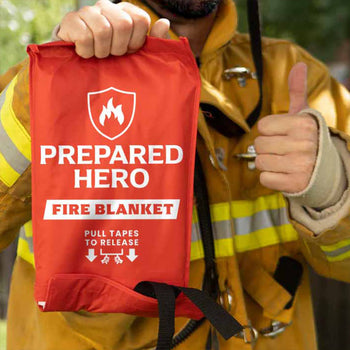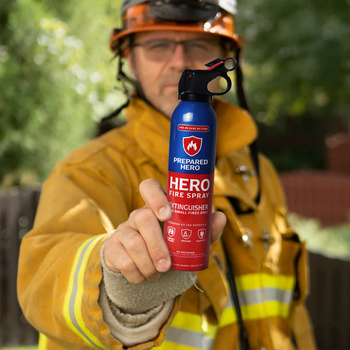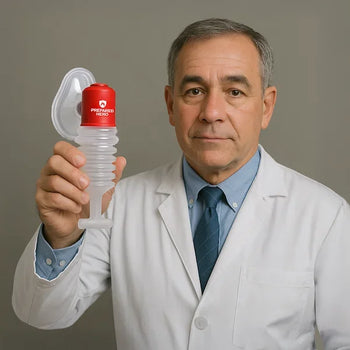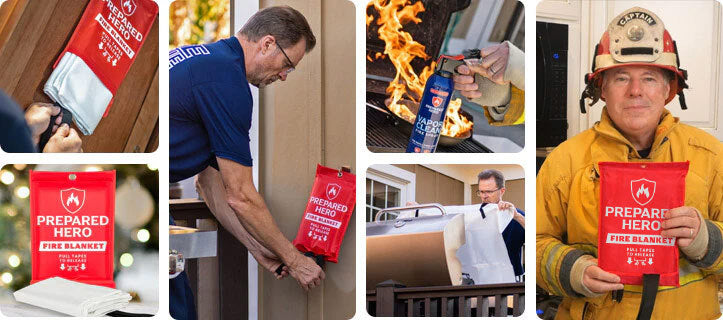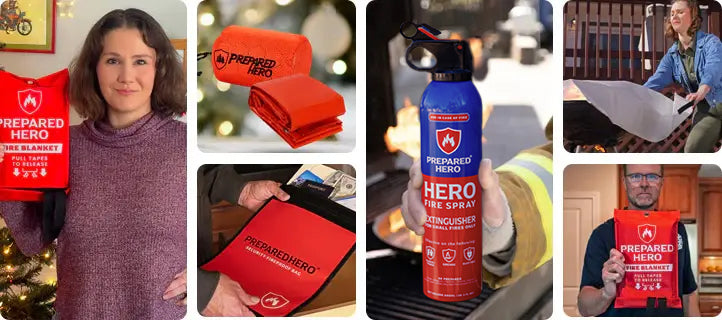Where you put your smoke detectors matters just as much as installing them. Proper placement makes sure they can detect...
Dealing with a home fire can be stressful and time-consuming. We know that you have a lot to think about, so we compiled everything you need to know to do proper fire damage cleanup.
Use the following guide to help you get back on your feet. Whether it’s cleaning your beloved drapes or furniture, we got your back.
How to Prepare for a Fire Damage Cleanup
- Inspect your house for damages.
- Make a list of what to throw away.
- Throw away damaged items.
Before you start cleaning up your house after a fire, there are a few things you need to do. Here’s how you can prepare for a fire damage cleanup:
1. Inspect your house for damages.

Credits: Rodnae Productions
First of all, you should inspect your home for damages. Depending on the intensity of the fire, you or a professional can inspect your house for damages.
If the fire is small, you can inspect your home for damages. On the other hand, if the fire caused a lot of damage, it’s better to have a professional inspect your property.
A professional should take a look at your house before you go in or attempt to clean or fix any fire damage. Aside from structural damages, your property could have hidden damages involving electrical wires.
In addition, make sure to file a claim with your fire insurance provider. They’ll likely send a representative to assess the fire damage.
Checking structural damage
Before you attempt to go inside your house after a fire, check for structural damage first. Inspect your home for loose electrical lines, cracks, broken beams, or other structural damage.
Damage on the outside usually indicated a more serious problem on the inside. Before entering your house to check for more structural damage, wear a hard hat and eye protection. Then, get a long stick, so you don’t have to go near structures that might have collapsed during the structure fire.
Common structural damage inside the house usually happens on the ceiling and floor.
If your ceiling sags, it means that it got wet when the firemen put out the fire. A wet ceiling means that it’s heavy and can fall anytime.
To check the ceiling, stay away from the sagging part and poke at it using your long stick. Poke holes starting from the outside of the sagging part, so the water drains out slowly.
If your floor sags, it can collapse anytime. To remedy this, place wood panels or thick boards that extend at least a foot on each side of the sagging part. Then, you can step on it and further assess your house for structural damage.
Lastly, take pictures of the structural damages. You’ll need them for your insurance claim.
Checking utilities and major systems

Turn off your electrical panel and main valve before checking utilities and major systems. Turn off your main source of water as well.
If there’s a pool of water between you and the panel or fuse box, use a dry wooden stick to turn it off. Don’t step on the pool of water to turn it off.
But if you can’t reach the fuse box or panel after doing what you can, contact an electrician for assistance.
Next, inspect the panel for any tripped breakers. Tripped breakers usually mean that there are damaged wires inside your house. If you find tripped breakers, don’t turn them on and call an electrician right away.
If you think that sewage lines or water pipes got damaged, avoid using the toilet and faucets. Call a plumber to fix them for you.
Lastly, if you have a heating system, turn off all valves and call a professional before touching it again.
Checking household items
Household items, including cleaning products, can result in toxic fumes when mixed.
Make sure to check all household items that can be fire hazards. Even spilled chemicals that aren’t harmful must be checked.
2. Make a list of what you need to throw away.

After inspecting your house, identify and take note of what you need to throw away.
While some items look fine after a fire, they may be damaged. To avoid sitting on a broken chair or eating toxic food, make a list of what you need to throw after a fire.
Here are the common items you must throw after a fire:
- Electrical items
- Burned Fabric
- Burned Furniture
- Medicine
- Cosmetics
- Food
Electrical Items
Don’t use appliances and other devices until a professional checks them for heat and water damage. If you’re not sure about their condition, it’s better to throw them away than risk another fire.
Burned Fabrics
While you can clean clothes, drapes, sheets, and other fabric after a fire, you must throw away burned ones. According to a study published in Procedia Engineering, burned fabrics are toxic. Smoke and soot also have chemicals that can affect your breathing and irritate your skin.
Fabrics may also contain harmful chemicals used by firefighters. So, if your clothes, drapes, sheets, and other fabrics are burned, it’s best to throw them out.
Burned Furniture
Like clothes and other fabrics, furniture (especially those with fabric and foam) contains chemicals that you can’t clean out.
Wooden furniture may also be compromised on the inside. If you’re unsure about their condition, call a professional to inspect them. Otherwise, throwing them out is your best option.
Medicine
According to the FDA (Food and Drug Administration), the potency of your medicines is affected by high heat, smoke, water, and chemicals used by firefighters. Hence, you better throw them all away.
Cosmetics
Cosmetics and toiletries contain chemicals easily affected by heat from the fire. They can also be affected by the contaminants from other burned items and chemicals used by firefighters. So, the safest option is to throw them out.
Food
Food items can be compromised during a house fire. While non-perishable and canned food may look fine after a fire, the heat and chemicals used while putting out the fire might have damaged the contents. In addition, according to Dr. Simon Cotton, a professor from the University of Birmingham, burnt food contains acrylamide, a potential toxin and carcinogen in its industrial form.
3. Throw away damaged items.

Once you've finalized the items you have to throw, dispose of them properly. Depending on the size of the fire, you might have to throw away a huge pile of items.
Consider renting a dumpster to make the process easier. By doing this, you can focus on other areas of your house.
How to Clean Up After a Fire
- Open windows and doors to increase air circulation.
- Get rid of debris carefully.
- Clean your house’s exterior.
- Clean your house’s interior.
- Remove smoke, soot, and ash from clothes, furniture, and other surfaces.
1. Open windows and doors to increase air circulation.

Before anything else, open all windows and doors to increase air circulation. You can also use fans to provide more ventilation. Doing so will help remove the smell of chemicals and smoke.
Wait for a few hours to make sure that your house has enough air circulation before you start cleaning.
2. Get rid of debris carefully.

Many insurance policies cover debris removal after a house fire. Check with your insurance provider to see if your policy covers debris.
Nevertheless, always handle debris with caution. Debris from burned properties contains harmful chemicals, including carcinogens. Ash can also irritate your skin and trigger asthma and other breathing issues.
Make sure to wear protective clothing, including long-sleeved shirts, gloves, eyewear, and long pants, when handling debris.
Always wear a fitted mask (N-95 or P-100) to filter ash effectively. If ash gets on you, wash it off as soon as possible.
Lastly, use a HEPA-filter vacuum cleaner to avoid getting ash into the air. Remember, regular vacuums don’t filter tiny particles and blow them into the air where your kids can inhale them.
3. Clean your house’s exterior.

Take care of your house’s exterior after getting rid of debris.
Cleaning the roof after a fire
If there’s damage to the roof, go up to the side to check and clean the gutters. Remove ash and debris using a broom with a long handle or a gutter scoop.
Once you’re done with the gutter, get a ladder and go up the roof (given that it won’t collapse). Use a broom or a HEPA-filter vacuum cleaner to get rid of ash and debris.
Cleaning walls, doors, and windows after a fire

Clean the external walls next. Use a power washer to get rid of soot, ash, and chemicals. If there damaged area’s small, you can use a stiff brush and borax with water to eliminate surface damage.
Work from top to bottom, so the water runs down to uncleaned areas. This makes recleaning easier. If firefighters used foam fire extinguishers to put out the fire, scrape the foam using a paint scraper.
As for the door and windows, a regular window cleaner will do. Just like the walls, work from top to bottom. Your windows have to be treated with glass cleaner.
Cleaning the driveway after a fire
Finally, clean your driveway and walkway. Use a power washer to get rid of grime and soot.
4. Clean your house’s interior.

Cleaning the ceiling after a fire
Look up first. Ceilings often get stained and need to be cleaned before being repainted. The oily residue from the fire stains can be transferred by dirty hands.
To remove stains from your ceiling, use a solution made of four to six tablespoons of trisodium phosphate, two tablespoons of dishwashing soap, one cup of chlorine bleach, and one gallon of warm water.
Then, put on rubber gloves and get on a ladder. Clean one tiny area at a time using a sponge. Rinse each area right away and leave the surface to air dry.
Don’t repaint your ceiling until they’re totally dry, at least 48 hours after cleaning.
Cleaning walls after a fire
Use the same solution (six tablespoons of trisodium phosphate, two tablespoons of dishwashing soap, one cup of chlorine bleach, and one gallon of warm water) above to clean interior walls after a fire.
Wearing rubber gloves and using a big sponge, start at the top of the wall and go down in a circular motion. Then, rinse from top to bottom so the water runs down to unrinsed areas. Leave the wall to air dry.
Cleaning the floor after a fire

Use a vacuum to remove any water left on the floor. If you have carpets or vinyl flooring, remove them. Depending on their condition, you might need to throw them.
Then, mop the floor using the solution above. Once you’re done, mop them again (this time with lukewarm water). Lastly, leave the floor to air dry.
5. Remove smoke, soot, and ash from clothes, furniture, and other surfaces.

Cleaning clothing after a fire
The key to saving your clothes after a house fire is treating them as soon as possible. The longer you wait, the more smells and stains remain.
To clean your clothes, use the attachment on a vacuum to remove most of the ash particles. Then, sprinkle some baking soda on the stains. This absorbs the remaining soot.
Next, vacuum your clothes after 15 minutes. Repeat this until most of the stains are removed.
Cleaning furniture after a fire
You can save drapes and furniture if the fire damage is slight.
If your upholstered furniture is soaked and you want to save the frame, strip off the padding and fabric immediately. Doing so prevents mildew and mold growth.
On the other hand, hardwood furniture can be cleaned using oil soap or a furniture cleaner. If they have deeper stains, sand and repaint them.
Cleaning dishes and utensils after a fire

Plastic and wood items must be thrown out because they easily absorb smoke and chemicals.
The rest can be salvaged as long as you clean them thoroughly. To do so, wash your dishes, utensils, and other kitchen items with hot water and soap.
Then, rinse them in a solution made of one gallon of water and two tablespoons of bleach.
Cleaning books and important documents after a fire
Put important documents and books in a huge ziplock bag. Then, put a powdered odor eliminator. Make sure that they’re properly covered with the powder. Give them a slight shake if needed.
Next, seal the bag and leave it for at least 48 hours. Remove the important documents and books and smell them. If the odor lingers, reseal the bag and leave them inside for a few more days.
Frequently Asked Questions
What do you do with belongings after a fire?
Any belongings damaged after a fire must be thrown out. On the other hand, belongings that were not damaged after a fire must be thoroughly cleaned. Make sure to carefully inspect your belongings after a fire to see if you have to throw them or not.
How do you clean the air in your house after a fire?
To clean the air in your house after a fire, open the windows and turn on the fans through the windows first. This ventilates your house and gets all the dirty air out.
How do you clean fire damaged concrete?
To clean fire damaged concrete, use a wire brush to apply a solution of warm water and trisodium phosphate on the concrete. For bigger areas, dry ice blasting is the best method for fire damage cleanup and restoration.
How do you clean fire damaged wood?
To clean fire damaged wood, start by wiping soot off using an old bath towel, dry cloth, or paper towel. Then, scrub the wood with soapy water, vinegar, baking soda, or degreaser. Then, rinse the wood. Repeat the scrubbing and rinsing process until the fire damaged wood looks clean.
Can clothes be cleaned after house fire?
Yes, you can clean clothes after a house fire. To clean your clothes, use the attachment on a vacuum to remove most of the ash particles. Then, sprinkle some baking soda on the stains. Next, vacuum your clothes after 15 minutes. After this, wash the clothes with a cup of baking soda or vinegar. Lastly, wash them using your favorite detergent.
Conclusion

You might have to clean or throw out your belongings after a house fire, depending on the damage.
Fire damage cleanup can be time-consuming, but with this guide, the process becomes more efficient. You can also use the guide above to determine which items need to be thrown out and how to clean those that can be salvaged.
But it's always better to be safe than sorry. Although it is impossible to foresee where or when a fire will start, you can take steps to get ready in case it does.
Assembling a fire kit with a fire blanket, fire spray, fire protection gloves, and smoke mask helps. Go to Prepared Hero and shop for fire safety tools now!


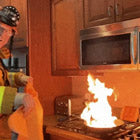 Fire
Fire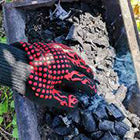 Safety
Safety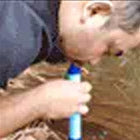 Survival
Survival Protection
Protection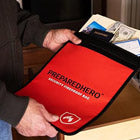 New
New Scouting America
Scouting America
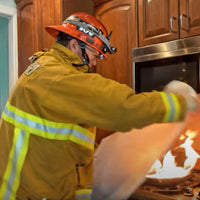 Fire
Fire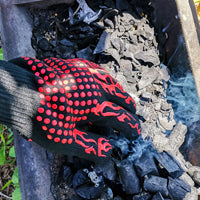 Safety
Safety Survival
Survival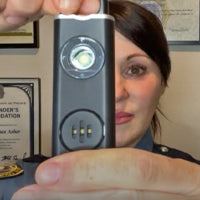 Protection
Protection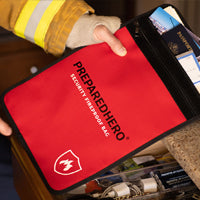 New
New
